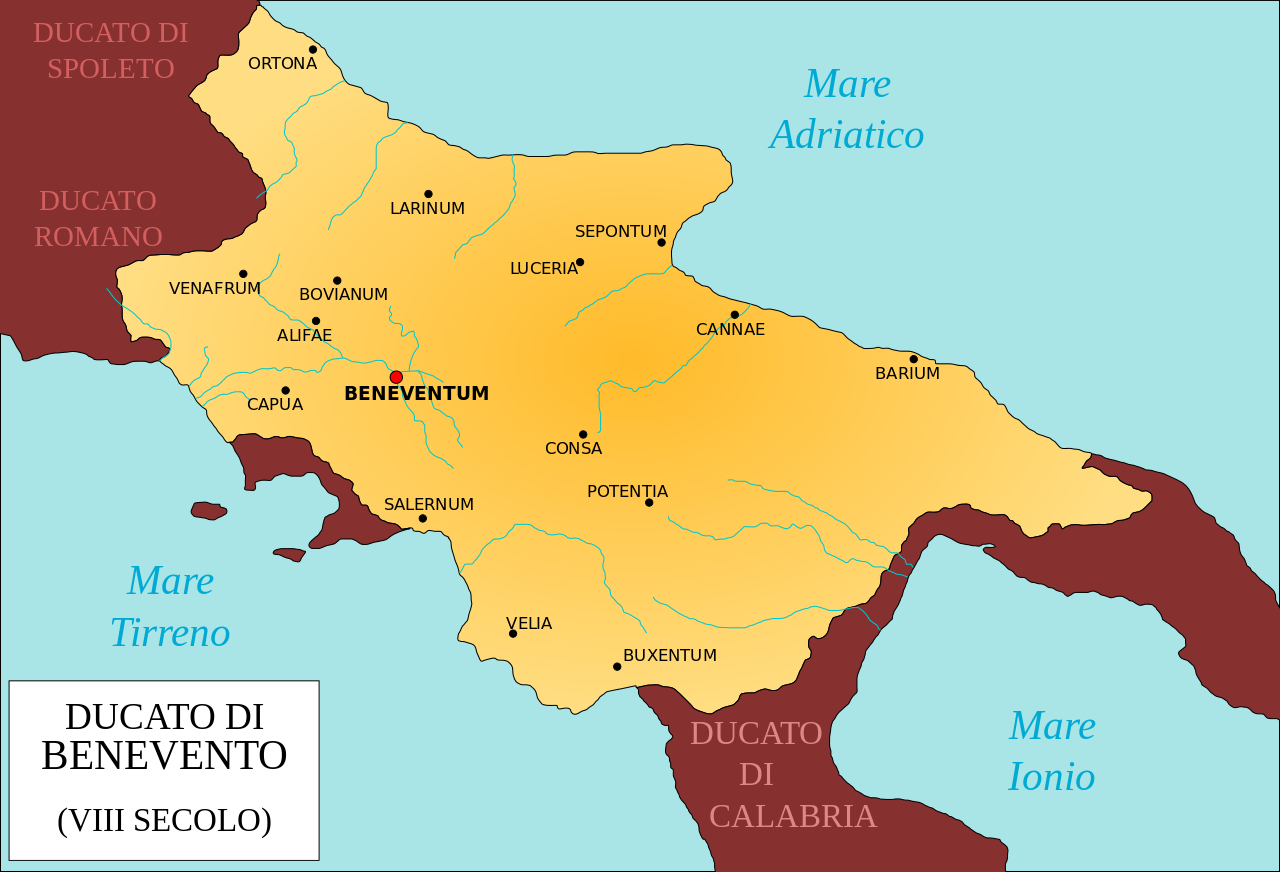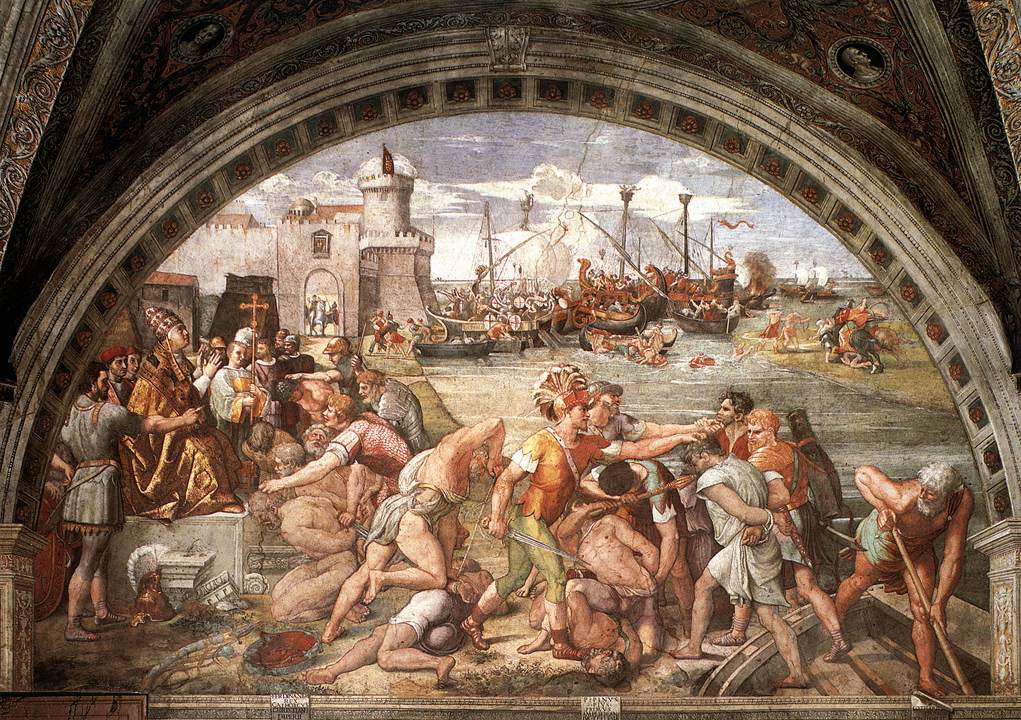Childhood
The division of the Roman Empire, the barbarian invasions of the Italian peninsula, and then the fall of the Western Roman Empire (476 AD) determined the history of Naples in the early Middle Ages. The last Western Emperor, young Romulus Augustus would pass his days in Naples in the Castellum Lucullanum, exiled from Rome by Odoacer, head of the Germanic foederati of Italy, who became King of Italy in 476. In 536 Justinian, the ambitious emperor of the East, sent his general Belisarius who had recently subdued the Vandals in North Africa, to conquer Italy and restore the Empire in the West. After Sicily, Belisarius headed north and reached Napoli where a garrison of about 800 Ostrogoths defended the city. Neapolitans themselves were torn but eventually decided to resist. The Byzantines managed to take the city through the aqueduct that had been drained of its water after a 20 days siege. A looting followed the initial indiscriminate killings of Neapolitans by the Hun mercenaries in the Byzantine army but soon order was reinstated and the Goths were allowed to leave unharmed. In 542 however Naples was reconquered by the Goths of Totila, who defeated the Byzantine forces. In 553 the Byzantines took back the city under the command of Narses, who with a great battle at the foot of Vesuvius definitively drove the Goths from Campania.

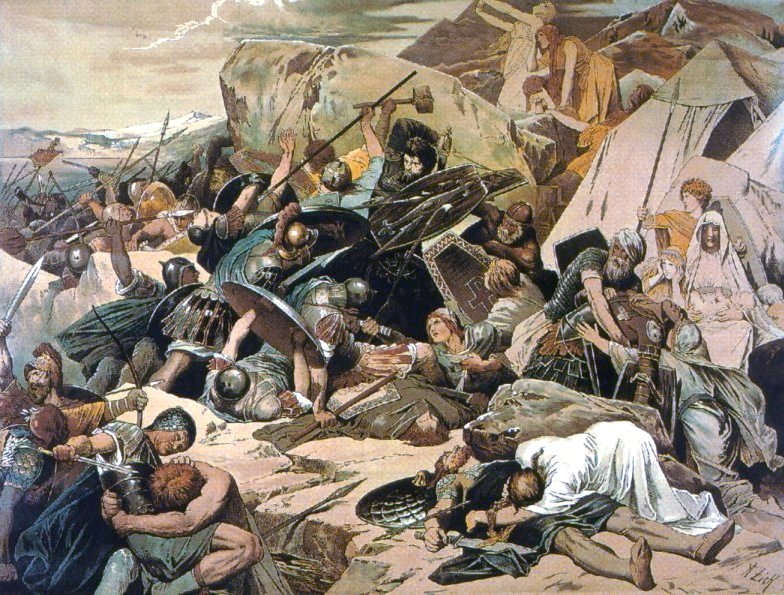
Under Byzantine rule and while the city was grappling with depopulation because of the wars it had to repel strong enemies such as the Lombards and the Vandals. Especially the invasion of the Lombards in 568 AD led to the rapid abandonment of undefended rural lands around Naples and Campania and the sudden growth of agro-towns or castra around the region. A strong municipal administration, the maior populi controlled the municipal coffers, the city’s elders must have had a role in decisions with their own curia and of course the church and the local bishop who towards the end of the 6th century was responsible for the city’s aqueduct. Effective power and military authority was at the hands of a dux or a magister militum while on occasion the two authorities (bishop and dux) were merged in the face of a single person. After an attempt at independence in 615, which led to a short-lived autonomous government, the emperor of the East in 661 accepted the requests of the Neapolitans, appointing a Neapolitan duke to head the city. In this way, although formally dependent on Byzantium, the city had its own government, which was first appointed by the Byzantines, then became elective, and finally hereditary. Gradually the Imperial representatives of Constantinople that were based in Ravenna lost the control over the various regions nominally under the Byzantine Empire either to the Lombards or through an increased level of autonomy as was the case in Naples. By the end of Duke Stephen II‘s of Naples term in 799 AD the Duchy of Naples was practically independent and its allegiance had shifted from Constantinople to Rome. It is also the period when Latin inscriptions replaced Greek in official usage and Saint Januarius replaced the emperor on the coins.
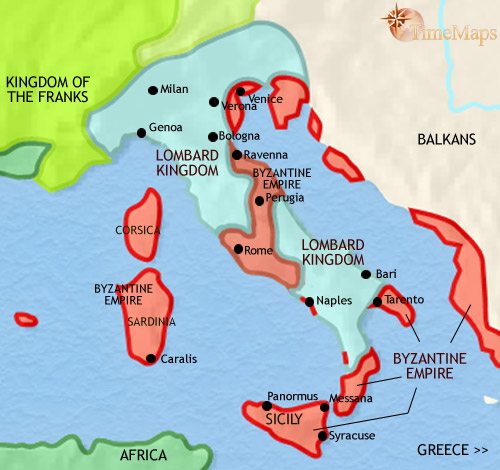
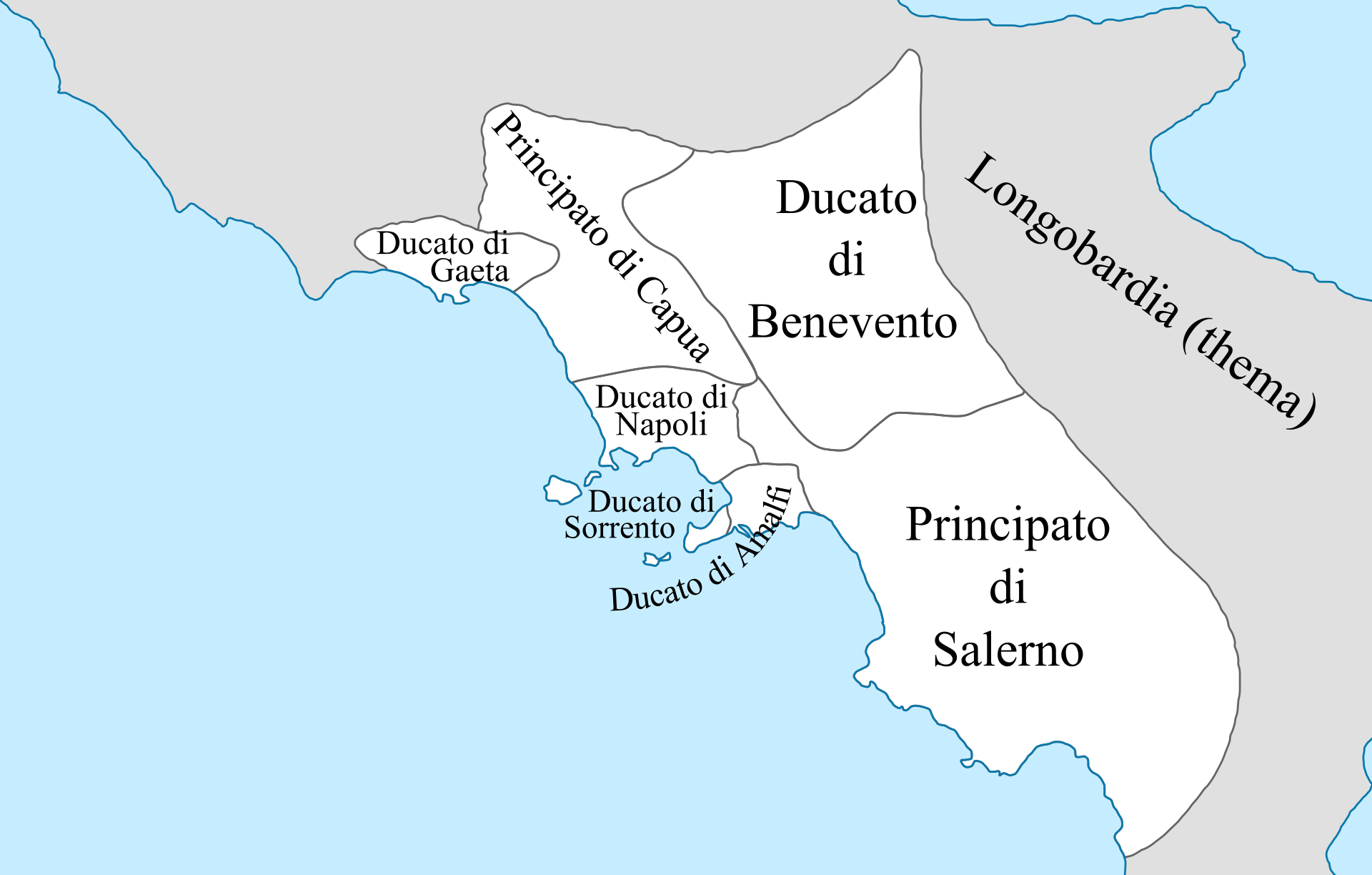
In the beginning of the 9th century the Duchy of Naples had to constantly defend itself against the attempts of the Lombards of the Duchy of Benevento to gain access to the sea. When the Byzantines called on Neapolitans for help against the Saracens who had turned Sicily into their favorite expedition ground, Neapolitans refused to give a helping hand. In July of 832 in a conspiracy orchestrated by the Duke of Benevento Sicone I, a group of pro-Lombard extremists, headed by a Lombard Prince name Bono killed Stephen III in front of the Duomo of Santa Restituta. Bono would become the first Lombard Duke of Naples, who a few months later, upon the death of Sicone I started to take back the lost territories of Naples with his troops. War would continue until 835 with both sides using the Saracens as mercenaries against each other. The Franks who had taken over the Lombards after the 770’s were called upon to intervene something that added a new piece to an already complicated puzzle. In 840 Neapolitans took matters in their own hands electing Sergio I the son of the count of Cuma as a duke, something that stabilized the internal political situation for a while. In 849 the new duke would join a first Italian coalition formed by Pope Leo IV to put an end to the Saracen raids for as long as possible and to restore security to commercial traffic. The Lega Campana consisted of the ships of the duchies of Naples, Amalfi , Gaeta and Sorrento, led by Cesario Console , son of the Duke of Naples managed to defeat the Saracens who were preparing to land at Ostia with the intention of invading and destroying Rome and the papacy. The Battle of Ostia would be immortalized by a famous fresco by Raphael that can be found in the Apostolic Palace in the Vatican.
